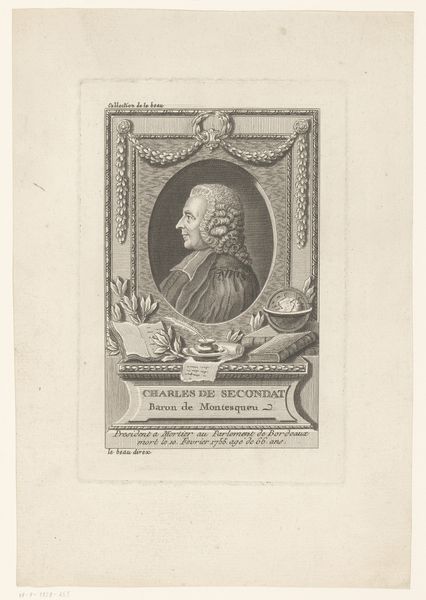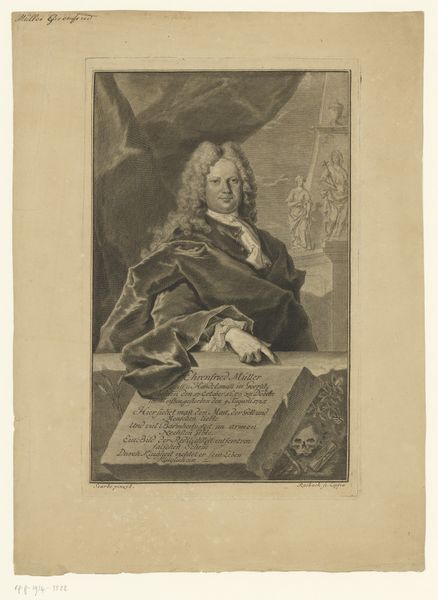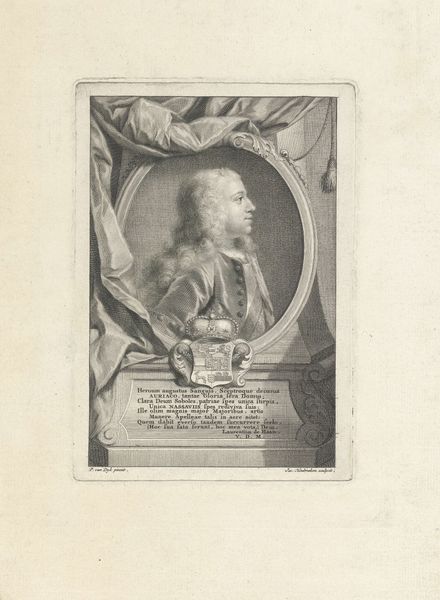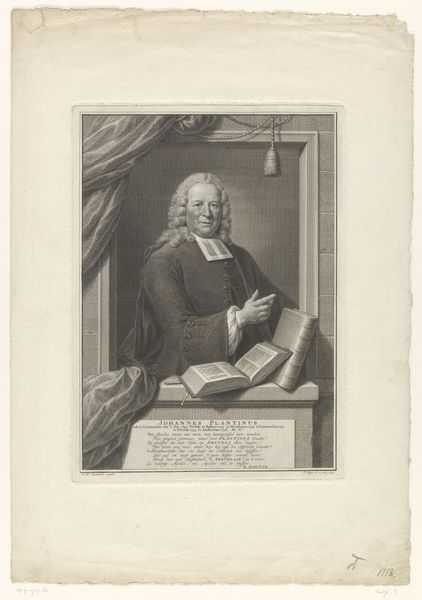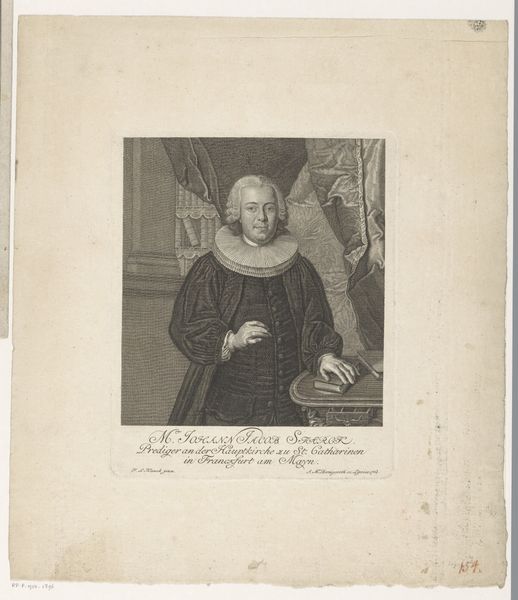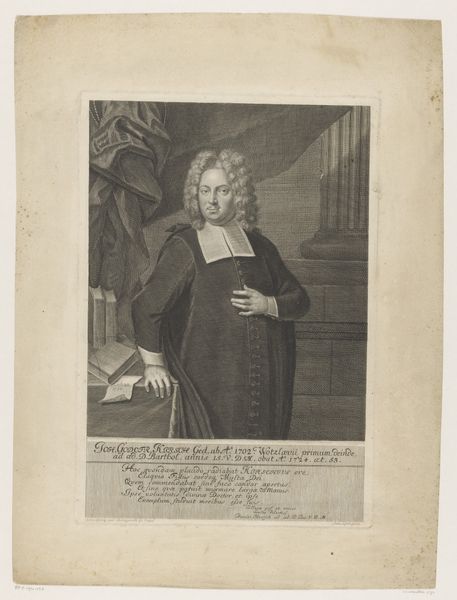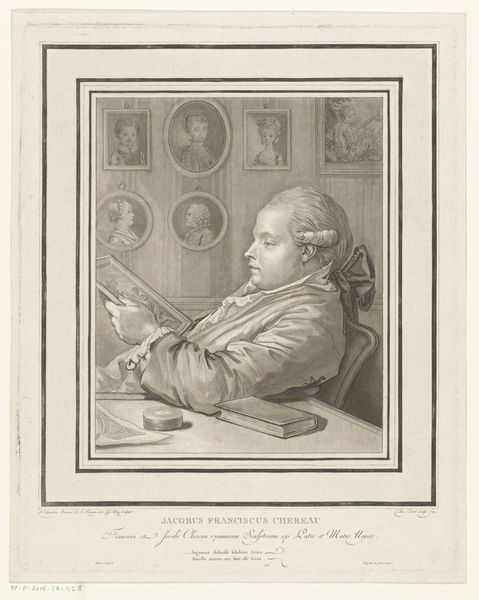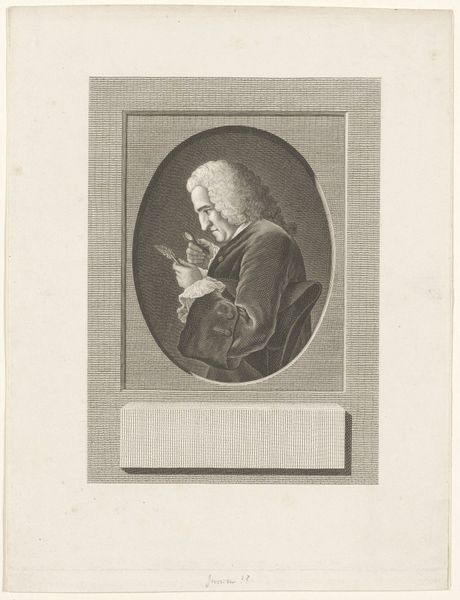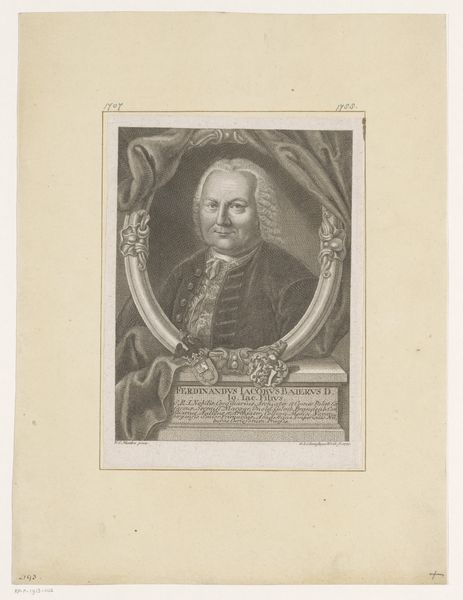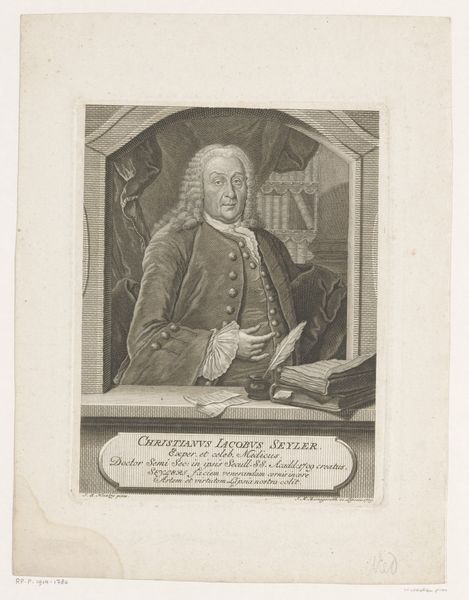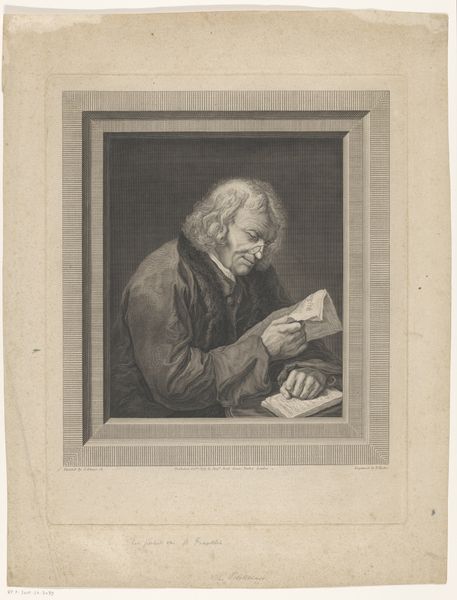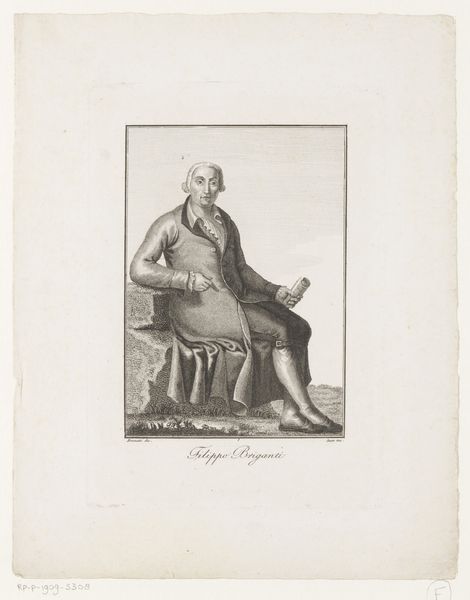
#
pencil drawn
#
photo of handprinted image
#
aged paper
#
toned paper
#
light pencil work
#
photo restoration
#
pencil sketch
#
old engraving style
#
personal sketchbook
#
pencil work
Dimensions: height 277 mm, width 192 mm
Copyright: Rijks Museum: Open Domain
Curator: This is "Portret van Bernard Firsen," created in 1762 by Christian Fritzsch. It's currently held in the Rijksmuseum collection. What strikes you initially about this piece? Editor: There’s a curious sense of staged intimacy. The sitter is posed, yes, but amidst a somewhat cluttered desk and towering shelves, lending a sense of a life actively lived, or perhaps performed for our consumption. It makes me consider power dynamics inherent in portraiture of the period. Curator: That's astute. The institutional framing heavily influences our read; considering patronage and visibility illuminates the societal context of this work. What does this representation communicate? Is it simply a rendering of a man in his study? Editor: Not solely. We see hints of global trade. Look at the backdrop of a bustling harbor scene within the depicted bookcase, symbolizing enterprise. But there is a contrast: The detailed naval background conflicts with his sedentary activity, possibly reflecting a time where maritime industry directly influenced society and culture at home. Curator: The portrait is filled with items, yet the sitter, Bernard Firsen, anchors our gaze and experience, suggesting not merely presence but an active role within social spheres shaped by historical forces. There is perhaps a tension between individual and institutional authority. Editor: It's tempting to psychoanalyze given the intimate feel despite being created in this old engraving style! He seems contemplative, almost caught mid-thought. Is this reflective of internal deliberations during periods of upheaval during the 1760s that this work encapsulates through symbols surrounding Mr. Firsen. Curator: This kind of critical inquiry helps reveal broader connections between personal identities, historical epochs and the visual language used. Such pieces not only capture an individual, but document evolving societal consciousness concerning commerce or academia around this period. Editor: Ultimately, studying these works challenges our presumptions surrounding not just past lives themselves but what stories we want from these snapshots across history—demanding we think inclusively while reconsidering preconceived limits on what is artistically/historically permissible.
Comments
No comments
Be the first to comment and join the conversation on the ultimate creative platform.
